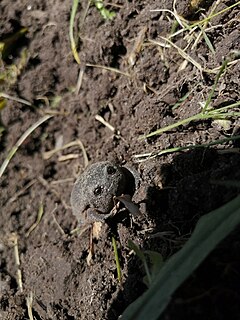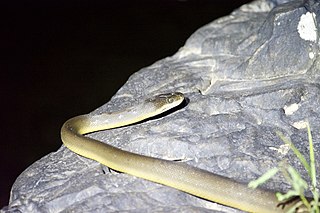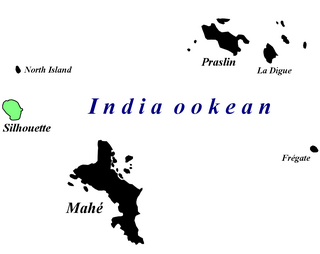
Scorpions are predatory arachnids of the order Scorpiones. They have eight legs, and are easily recognized by a pair of grasping pincers and a narrow, segmented tail, often carried in a characteristic forward curve over the back and always ending with a stinger. The evolutionary history of scorpions goes back 435 million years. They mainly live in deserts but have adapted to a wide range of environmental conditions, and can be found on all continents except Antarctica. There are over 2,500 described species, with 22 extant (living) families recognized to date. Their taxonomy is being revised to account for 21st-century genomic studies.

The lesser black-backed gull is a large gull that breeds on the Atlantic coasts of Europe. It is migratory, wintering from the British Isles south to West Africa. It has increased dramatically in North America, most common along the east coast. Formerly just a winter visitor, many birds are now spotted year-round. Some winters they occur in large numbers. Even on the west coast, this species has become an annual winter visitor in California with birds reported around most of the state each winter. They've even been seen in numbers at the Salton Sea.

The jungle myna is a myna, a member of the starling family. It is found patchily distributed across much of the mainland of the Indian Subcontinent but absent in the arid zones of India. It is easily recognized by the tuft of feathers on its forehead that form a frontal crest, a feature also found in the closely related Javan myna and the pale-bellied myna which were treated as a subspecies in the past. The eyes are pale, yellow or blue depending on the population and the base of the orange-yellow bill is dark. It has also been introduced either intentionally or accidentally into many other parts of the world including Fiji, Taiwan, the Andaman Islands, and parts of Japan. The species has also spread out on its own to some islands in the Pacific.

The big brown bat is a species of vesper bat distributed widely throughout North America, the Caribbean, and the northern portion of South America. It was first described as a species in 1796. Compared to other microbats, the big brown bat is relatively large, weighing 15–26 g (0.53–0.92 oz) and possessing a wingspan of 32.5–35 cm (12.8–13.8 in).

The ashy woodswallow, sometimes also called the ashy swallow-shrike, is a woodswallow which is found in south Asia. Like other woodswallows, it has a short curved bill, a short square tail and long wings. It is usually seen perched in groups, high on powerlines, tall bare trees and most often in areas with a predominance of tall palm trees.

The West Indian leopard gecko is a species of leopard gecko found in western India, with its range possibly extending to southeastern Pakistan. The specific name "fuscus" means dark or dusky.

Pelobates fuscus is a species of toad in the family Pelobatidae, native to an area extending from Central Europe to Western Asia. It is commonly known as the common spadefoot, garlic toad, the common spadefoot toad and the European common spadefoot.

The brown shyshark or plain happy is a species of catshark, part of the family Scyliorhinidae. It is endemic to the shallow, coastal waters of South Africa from west of Cape Agulhas to KwaZulu-Natal. This benthic species is usually found over sandy or rocky bottoms. Measuring up to 73 cm (29 in) long, the brown shyshark is stoutly built, with a broad, flattened head and rounded snout. Unlike other shysharks, the brown shyshark has a plain brown color, though some individuals have faint "saddle" markings or light or dark spots. When threatened, this shark curls into a circle with its tail over its eyes, which is the origin of the name "shyshark". It feeds on bony fishes and lobsters, and is oviparous with females laying pairs of egg capsules. The International Union for Conservation of Nature (IUCN) has assessed this harmless species as Vulnerable. It is of no commercial or recreational interest, but its limited distribution makes its entire population vulnerable to increases in fishing pressure or habitat degradation.
The Guadeloupe big brown bat is a species of vesper bat. It is found only on the island of Guadeloupe. It is one of the 11 species of bat found on Guadeloupe, and one of the 3 that are endemic.
The Southeast Asian long-fingered bat is a species of vesper bat in the family Vespertilionidae. It is endemic to Japan. It has been assessed as endangered by the IUCN.

The plateau vole is a species of rodent in the family Cricetidae. It is found only in China. Its natural habitat is temperate grassland.
The mottled-tailed shrew mouse is a species of rodent in the family Muridae. It is found in West Papua, Indonesia and Papua New Guinea.

The broad-toothed rat is a species of rodent in the family Muridae.

Breviceps fuscus, also known as black rain frog, plain rain frog, brown short-headed frog, and Tsitsikama rainfrog, is a species of frogs in the family Brevicipitidae. It is endemic to the southern coast of South Africa.

The black musk deer or dusky musk deer is a species of even-toed ungulate in the family Moschidae. It is found in Bhutan, China, India, Myanmar, and Nepal.

Stagnicola fuscus is a species of freshwater snail, an aquatic gastropod mollusk in the family Lymnaeidae, the pond snails.

The water python is a nonvenomous python species found in Australia and Papua New Guinea. No subspecies are currently recognized.

Zabius is a genus of scorpion in the family Buthidae. There are three species described in this genus.
Aipysurus fuscus, commonly known as the dusky sea snake or Timor Reef snake, is a species of sea snake in the family Elapidae. It is found in the Timor Sea between Australia, Indonesia and East Timor and has been classified as endangered.

Afrolychas braueri, commonly known as the Seychelles forest scorpion, is a species of scorpion in the family Buthidae. It is currently thought to survive only on Silhouette Island, Seychelles, although the species was historically found on two additional Seychellois islands. This scorpion lives in leaf litter in forests that are largely unaffected by invasive plant species. It is a small yellowish-brown scorpion with three prominent keels on the dorsal surface of its mesosoma, which distinguishes it from other scorpions. While not much is known about the Seychelles forest scorpion's ecology due to the paucity of sightings, it is known to rely solely on its venom to capture its prey and defend its young. Its venom is not dangerous to humans.
















